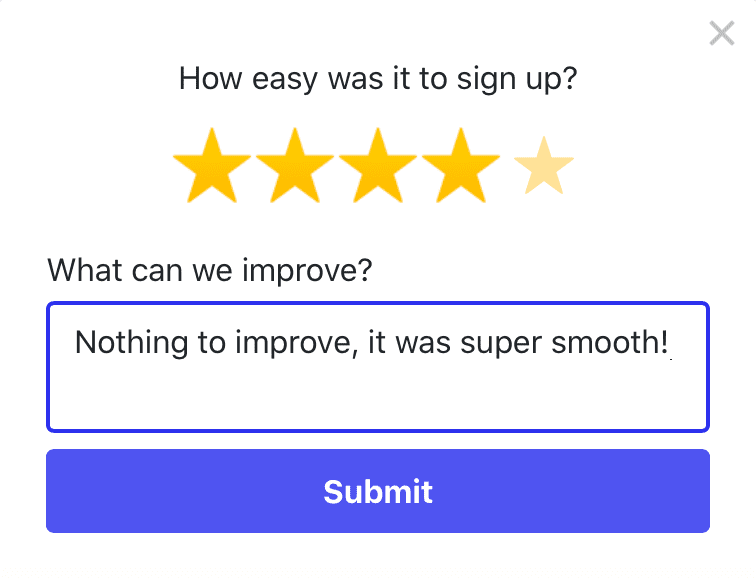What is a customer effort score (CES)?
Published on the 9th of August 2020
In short, a customer effort score (CES) measures how much effort it takes for a visitor or customer to complete a certain task. To get a CES score, you ask how easy it was for someone to complete a certain task.
Some good Customer Effort Score example questions
It's nice to ask 'How easy ...' instead of 'How difficult ...' because that feels more positive towards customers. Here are some examples:
How easy was it to interact with (company)?
(Company) made (name of issue) easy to handle?
How easy was it to find (X)?
How easy was it to do (X)?
How quickly did (company) complete your order?
Alternatively you can ask How much effort did it take you to ... but we won't recommend it as it feels a little unnatural.
Scale
A Customer Effort Score can be measured using a 5 point scale. With Freddy Feedback you can either use the 5 scale emoji survey or a 5 star survey. Emojis are actually a really fun and friendly way for customers to give feedback. If this fits your brand, definitely try to use the emoji scale.










You can even use animated emojis!





And this is what it looks like to your customers in our simple and friendly widget:

Calculating the Customer Effort Score
It's an average score, so if you want to know your CES for all your customers that gave feedback, you multiply the number of responses by the score for each score, add all these totals together and then devide the grand total by the number of responses.
Long story short: we do this for you and give you all the insights in our simple yet powerful dashboard:

As you can see we'll have the average score, breakdown per score and all the responses ready for you in one simple overview.
How long should I measure CES?
Just like NPS and CSAT scores, this is a long term metric. You can still look at individual responses and take action on that feedback, but you should set your question right and then track this score over time.
This way you can measure whether you're improving and reduce the amount of effort it takes customers to complete a task. You can monitor multiple things at once with multiple surveys (for instance: onboarding and purchase experience) so you stay on top of the most important aspects of the customer journey.
Difference between Customer Effort Score (CES) and Customer Satisfaction (CSAT) Score
The difference between is what you measure: customer effort or customer satisfaction, and thus how you ask the question. Given that CSAT measures satisfaction, the questions are more oriented to find out how happy customers are, like 'How satisfied are your with your purchase experience today?'. We wrote about the CSAT score here.
How should I use the results?
There isn't a universal benchmark for a good CES score because it highly depends on the business, the product and the context. But of course you want to be aiming for a high score - the higher, the better! A low score means that customers find your product difficult and ineffective, while a high score means that they find your product easy to interact with. In general it’s best to just get started so you have a baseline, and then improve from there.
The score gives you an excellent opportunity to look over any comments that your customers have left to show you what you can do better and the areas that you can improve in. All success comes with some failures, but the key is that not everyone knows what those are. With CES surveys from Freddy Feedback you can pinpoint what's going wrong with precision and make sure that you keep improving your customer experience.
Some final remarks
Lastly we would say: don't get too hung up on abbreviations. We gave the same advice when writing about NPS scores. There are many industry terms, and sometimes people focus too much on the metric name vs focussing on their customers.
We strongly believe that the more natural you ask your questions the better. Just think of it like talking to a friend. Your customers will feel appreciated that you asked them about their experience, and they'll be more inclined to give you feedback.